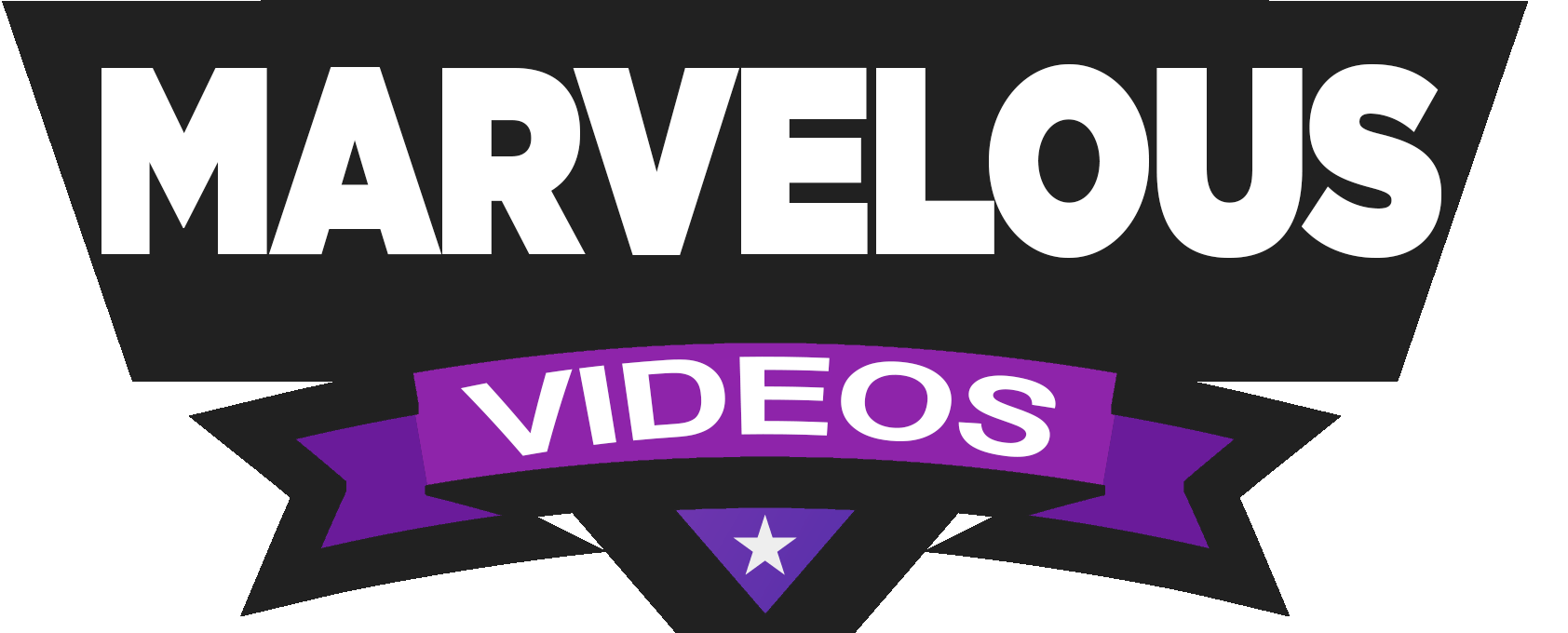What is not to love about the queen of crooks, Harley Quinn? This DC villain has a colourful history and is still a favourite of the public.
On September 11, 1992, Quinn made her animated television debut in “Joker’s Favor,” the 22nd episode of Batman: The Animated Series. Paul Dini and Bruce Timm created Quinn to serve as the Joker’s sidekick. Quinn was planned to appear in just one episode.
Nevertheless, she ended up serving as the Joker’s sidekick and love interest throughout the D.C. Animated Universe, and seven years later, beginning with the 1999 one-shot Batman: Harley Quinn #1, she was added to the Batman comic book canon by DC Comics. She has come a long way since her debut and now has full-length movies and television series to her credit. Prepare for a quick lesson on everything Harleen Quinnzel!
Understanding her origins from Batman the animated series
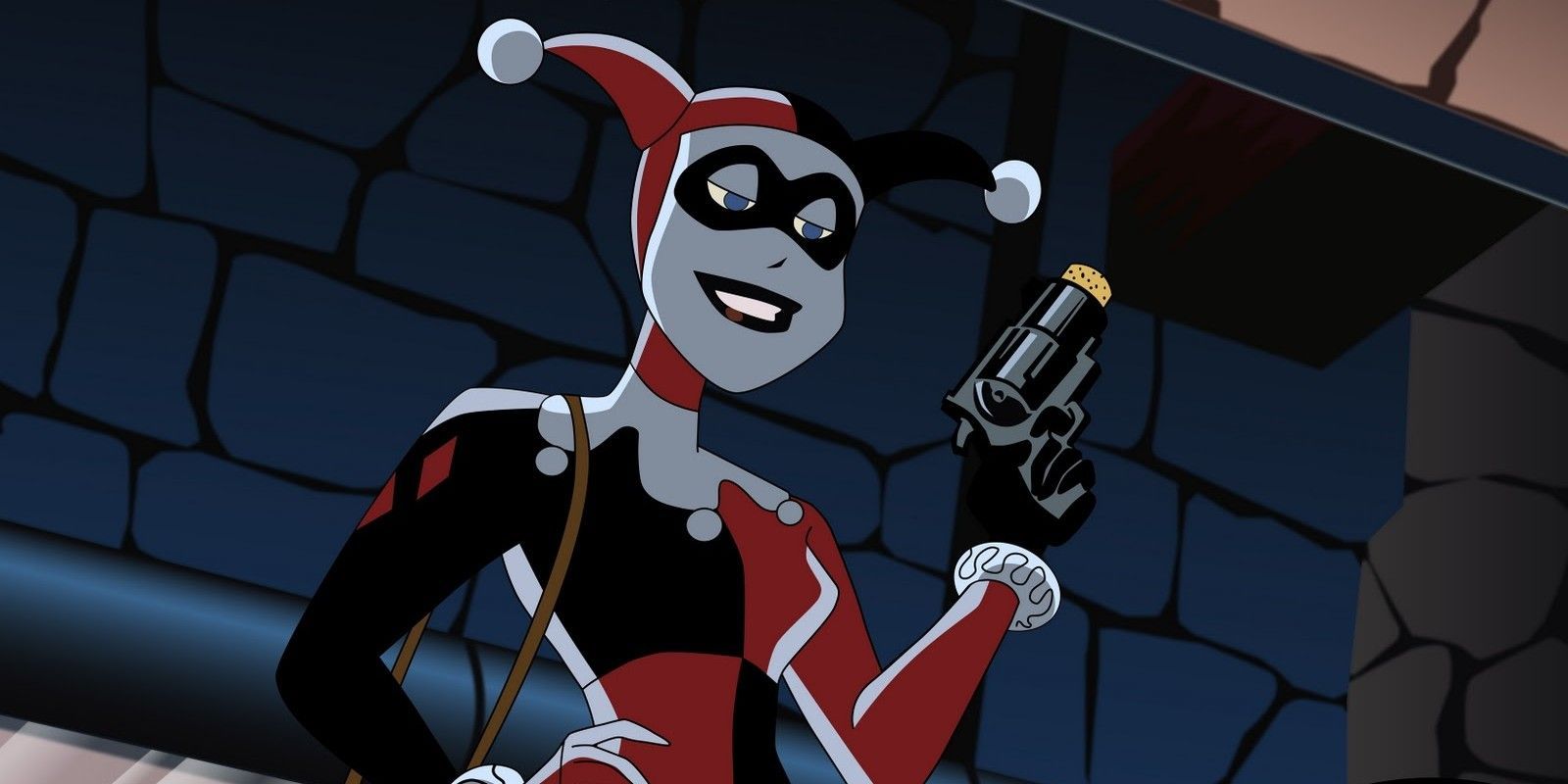
It is essential that we start at the very beginning when discussing the now-iconic Harley Quinn and tell the tale of the very first episode in which she made her appearance. In her debut episode, “Joker’s Favor,” she plays the role of yet another lackey for the Joker, despite being incredibly attractive in a terrifying way, if you see what I mean.
Charlie Collins, a courteous accountant from Gotham City, is shown in the episode shouting at a bad driver on his way home from a challenging day at work. The Joker is revealed to be the questioned driver. As he tries to run away, The Joker pursues him, dragging him into the woods where his car breaks down. He leaves, thinking he has escaped, but the Joker appears out of nowhere. He begs the Joker to save his life and swears he will do everything for him. Joker agrees when Charlie offers to help him out by handing him his driver’s licence in exchange for letting him leave.
The Joker discovers Charlie and gets in touch with him two years later to ask for a favour, even if he changes his name and moves to a different city. He arrives at the airport, where Harley Quinn is waiting for him. Although she is our introduction to her, she is not the episode’s primary focus. The episode primarily focuses on Charlie’s treacherous favour, which is to attend Commissioner Gordon’s testimonial dinner and to unlock a door. While hurrying to set up a temporary Bat-Signal before the testimonial starts, Batman nods in accord. When Harley answers the door, he brings in a cake that contains the Joker and lets out nerve gas to helplessly disable the police.
A bomb hits the Commissioner dropped by the Joker after he emerges from the cake, and Charlie, who is clinging to the door handle with his hand, is bid farewell. Batman manages to defuse the bombs in time, destroying the Joker’s escape car. There is a brief conflict between Batman, his thugs, and Harley prior to Batman and the Joker engaging in combat while the Joker attempts to explode another bomb. Batman throws the bomb underground before it goes off.
Joker runs away during the commotion only to come upon Charlie in an alley. When Charlie hits The Joker in the gut, sending him falling into some rubbish, he is startled despite his attempt to shrug this off. Charlie pulls out a bomb he stole from the Joker and threatens to blow them both up to protect his family as the Joker makes another threat in a fit of rage. Batman commands Charlie to stop just in time, but he insists that the Joker will not be stopped even if he is put in jail.
The Joker is so terrified that he divulges all the information he possesses on Charlie in an effort to stop him. Charlie persists, and the Joker, who is hiding behind Batman, is hit by the explosives. The bomb, however, turns out to be a hoax. Charlie yells “Gotcha!” as the scene comes to a close. As he apprehends the Joker, Batman chuckles and orders Charlie to go home. Charlie then makes a happy exit.
Harley thus assisted the Joker in an assault on James Gordon’s life by setting up an explosive at his testimonial banquet. This was his first criminal act. She was responsible for carrying a big cake to the ceremony while posing as a police officer. After a brief fight, Batman defeated her. Post this, she joined the Joker in almost all of his criminal plots as an accessory for the rest of the series.
While this was a great episode, and quite a typical one that one would expect from the series, as far as Harley Quinn’s character is concerned, it is quite clear from her role in the episode that Harley was initially only brought in as more of a comediic relief and a side character that was not intended to be developed further, but slowly the creators started to take the character seriously.
Seeing the amount of love Harley Quinn received upon debut, she became a mainstay in the series and the rest is history. She was involved in everything, from the scheme to patent “Joker Fish” and the accompanying assassination attempts on two Gotham city officials. She was in charge of dosing G. Carl Francis a binary compound that, upon exposure to its second component, would kill him. When the detective discovered the Joker’s lair, she would subsequently apprehend Harvey Bullock.
She also mourned for Joker when he was presumed dead and went back to working for him when he came back. However, she also faced ostracization from him and when she was kicked out, she was at her lowest. But in a twist of events, the series expertly navigates this breakup and she ends up with Poison Ivy, becoming the Queens of Crime together! She also assisted Batman and was imprisoned in Arkham for rehabilitation. Harley Quinn has had one heck of a journey and we are just getting started.
The character was explored further in comic books
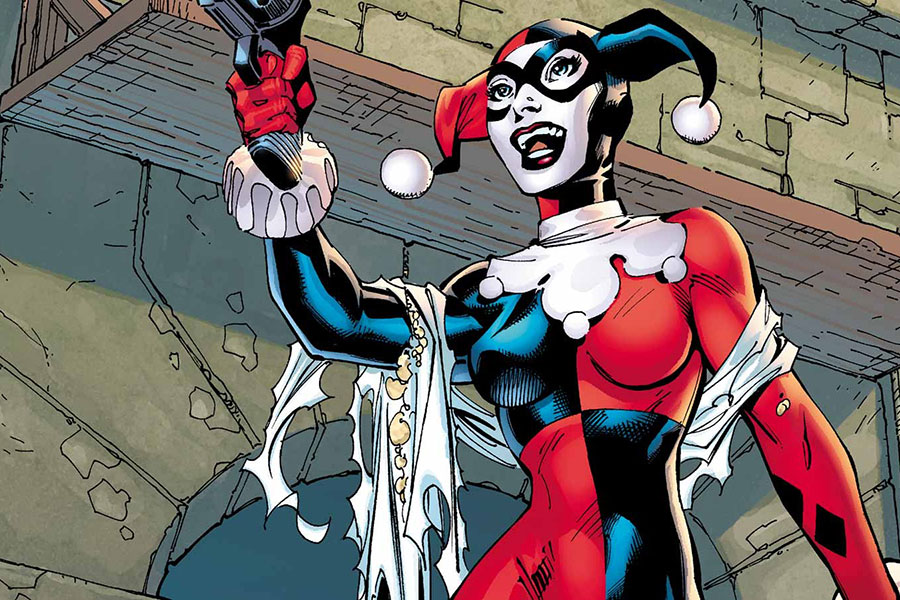
Harley Quinn was adapted into D.C.’s comic books as a result of her popularity. A year after her first appearance in Batman: The Animated Series, Harley Quinn made her first ever comic book breakthrough in the twelfth issue of The Batman Adventures, a series that is set in the same universe as The Animated Series, in September 1993.
She later established herself as a regular character in the series. As Hayley Fitzpatrick, she made an appearance in the Batman: Thrillkiller story that was published in 1997 by the D.C. Comics imprint Elseworlds, which specialised in publishing out-of-continuity alternate reality stories. Her canonical status was established in 1999 with the publication of Batman: Harley Quinn #1.
Harley’s origin story was told in the one-shot The Batman Adventures: Mad Love, which was published in February 1994. Their first comic book collaboration, the tale was written by Dini and illustrated by Timm. In Mad Love, Harley Quinn is first introduced as Harleen Quinnzel, a former psychiatrist who fell in love with the Joker while working as an intern at Arkham Asylum in Gotham City.
Mad Love also describes Harley’s transition into the Joker’s evil sidekick Harley Quinn and the Joker’s disrespect for Harley. With Dini revealing Harley Quinn’s motivations and portraying her as a tortured soul and compelling villain, Mad Love—widely regarded as the ultimate Harley Quinn tale—added depth to the character. The story was well-received, garnered the Eisner and Harvey awards for Best Single Issue that year, and was eventually made into an episode of The New Batman Adventures with the same name that year.
There are further dark and gritty things that we learn delving deeper into her comic book character exploration. Harley’s mother, we learn, is a somewhat stern but forgiving woman who frequently refers to Harley as evil and contrasts her with other heroes. Harley’s younger brother still resides with his mother and is a deadbeat with kids from at least two different women.
He supposedly received several sizable sums of money from Harley to get his life in order, but he wasted them. Known for using his charm to swindle women out of their wealth, Harley’s father is a convicted felon and con artist. According to Harley, the primary reason she decided to become a psychiatrist was so she could comprehend why her father had treated their family the way he had.
Harley enrolled in a psychology programme, or rather, deceived a college into letting her in but found the course incredibly boring.
To keep things interesting and match them up to her speed, she developed a hypothesis regarding the parallels between being in love and committing a crime. To Guy’s amazement, she chose to use her boyfriend Guy as the test subject for her experiment about how far someone would go for love, claiming that she had executed various crimes like killing a teacher. He shoots a blameless man in the course of protecting Harley, thinking that the victim was a professor who had been “murdered” but hadn’t yet passed away.
Guy asks Harley to kill him because he thinks he can’t bear the guilt and wants to die but can’t bring himself to do it. She does so out of love while passing off the murder as a suicide.
Traumatized by these experiences, she starts to think, like Guy did, that the universe is always chaotic. She suppresses her sorrow and feels a connection to the Joker, who shares some of Guy’s beliefs, so she applies for a position at Arkham Asylum and insists on speaking to him.
She demonstrates to the Joker her developing madness and fixation with him during their first one on one session. This appeals to the Joker greatly and from then on, Harley occasionally assists him in escaping before ultimately becoming his henchwoman.
Harley is eventually apprehended by Batman and imprisoned in an Arkham cell, but she continually manages to get out. She is finally able to flee during the happenings of No Man’s Land, and she decides right away to reunite with the Joker and aid him in his crimes. Later, in another account of her history, it is revealed that she was a psychology student who worked as a stripper on the side to help pay her bills. She then makes up the story that Joker had seduced her and then slowly drove her nuts. This is not it however.
The 1999 one-shot graphic novel Batman: Harley Quinn, written by Dini and drawn by Yvel Guichet, introduced Harley Quinn into the main D.C. universe by setting her genesis in the heart of the “No Man’s Land” plot. In the story, Joker immediately tries to kill Harley; Dini modified their relationship to be darker to reflect Joker’s persona in the comics.
When Harley was injected with a secret mixture by Poison Ivy, Dini also gave her additional skills, including a superhuman resistance to toxins and improved strength and agility. The DC Universe demanded that these alterations be made according to creator Dini who further had explained in the past that Harley would require some sort of physical advantage if she was going up against Batman and the other D.C. heroes.
This was followed up by Karl kesel’s first ongoing series. The subject of this particular comic series was “love gone horribly, tragically wrong.” In Kesel’s run on the book, which started in December 2000 and was accompanied by a secondary cast of goons known as the Quinntets, Harley Quinn split from the Joker and went off on her own as a criminal in her own right, not just a henchman.
After years of infrequent comic book appearances, Harley Quinn made a comeback in July 2009 with Gotham City Sirens, a team-up book written by Dini. The television show united Poison Ivy, Catwoman, and Harley Quinn—three of the most well-known female villains to oppose Batman—in an uneasy alliance. It is in Gotham City Sirens #7, that Dini established Harley Quinn’s hometown as Brooklyn and introduced her broken family, describing her con artist father as the primary motivation behind her choosing to pursue psychiatry. The series also went into greater detail about Harley Quinn’s past and early years. Gotham City Sirens’ initial issues were written by Dini and drawn by Guillem March.
Harley Quinn was revived by Adam Glass as a significant component of the villainous team Task Force X in the revamped Suicide Squad book as part of the New 52 reboot in September 2011. Her colour scheme was modified to red and blue, her jester costume was swapped out for a revealing outfit comprising of a corset and hot pants, her skin was bleached white, and her formerly blonde hair was changed to be half-blue and half-red to reflect the tone of the book. Additionally, her demeanour was portrayed as being more vicious and sociopathic than in her previous incarnation.
Glass examined Harley Quinn as a person in the book after separating her from the Joker “Glass said, “Harley’s always wanted to belong to someone. The Suicide Squad has become a family to her while she is becoming her own person. She is discovering herself in all of this, and if not Joker, then the team. She is beginning to realise that she has value beyond that of a sidekick.”
Remember how all of D.C. Comics’ comic book series was relaunched in June 2016 as part of the D.C. Rebirth event? Well, the Suicide Squad was relaunched, with the first instalment beginning with the one-shot Suicide Squad: Rebirth #1. Changes made in the final issues of her New 52 series were carried over to Harley Quinn’s D.C. Rebirth appearance, including pink and blue hair tips and a jacket that drew inspiration from Margot Robbie’s version of the character in the 2016 movie Suicide Squad.
For Harley Quinn’s Rebirth monthly series in 2017, Harley Loves Joker, co-written by Palmiotti and drawn by Bret Blevins, was a backup feature written by Harley Quinn co-creator Paul Dini. It lasted for nine issues. The narrative centres on Harley Quinn’s history with the Joker and revives her original persona. In contrast to how she was shown in Batman: The Animated Series, Dini and Palmiotti made Harley Quinn less of a “doormat” in the narrative and gave her an equal standing with the Joker. The two-part limited series of the same title, which also touched on Harley Quinn’s backstory as an intern in animal research at S.T.A.R. Labs and introduced viewers to her pet hyenas Bud and Lou, brought the plot to a close.
Last but not least, Harley Quinn is relocated back to Gotham City as a superheroine for the 2021 Infinite Frontier relaunch, where she regularly interacts with and helps the Batman household, and Riley Rossmo gives her a new style. The fourth continuous series of Harley Quinn, created by Stephanie Phillips and Rossmo, features Kevin, a disgraced Joker henchman, and Harley Quinn actively attempting to make up for her prior transgressions. Additionally, Harley Quinn plays a significant part in the Fear State crossover.
Margot Robbie became the perfect Harley Quinn in the cinematic universe
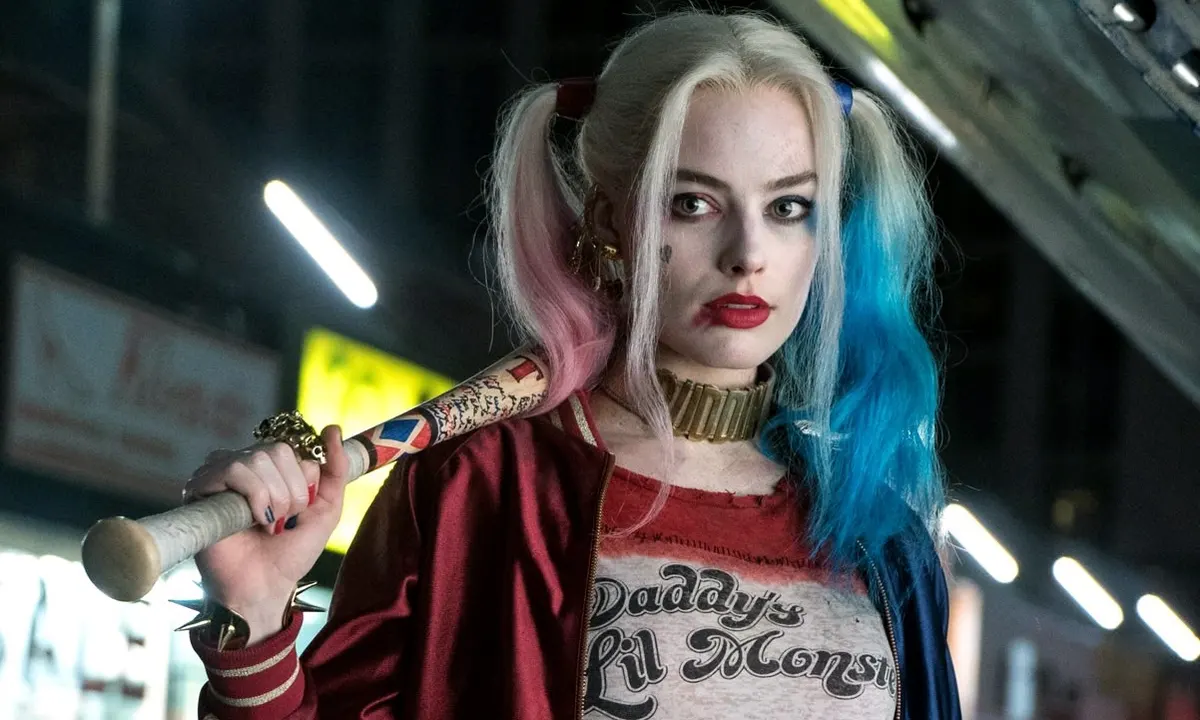
Margot Robbie has become synonymous with Harley Quinn, with most youngsters not knowing how Quinn was prior to Robbie’s famous cinematic portrayal of the character.
The release of Suicide Squad, the movie in 2016 brought Harley Quinn to life as portrayed by Margot Robbie. While the movie was buried under mountains of criticisms, Harley Quinn emerged as a shining star.
After Superman dies, intelligence agent Amanda Waller persuades the U.S. government to approve Task Force X, a band of criminals and supervillains, as a response force. Through the use of nanite bombs inserted in each criminal’s neck that can be detonated remotely if they attempt to rebel or flee, the team will be utilised to address dangers posed by metahumans under Waller’s authority. If they are successful, their sentences will be abbreviated.
She made an appearance as a former Arkham Asylum psychiatrist who the Joker had persuaded into becoming his insane sidekick. The character was defined by producer Richard Suckle as, a “fan favourite Funny, wild, and terrifying. There are simply not enough positive terms to encompass what you watch her do.” Quinn was one of the Squad’s most cunning members, according to Robbie, and her relationship with the Joker was “Moreover, Quinn finds him “very dysfunctional,” and is “crazy about him—like, genuinely mad. She is insane. Yet she cares about him. And the connection is seriously toxic and dysfunctional, but one that is addictive.”
Birds of Prey, released in 2020 saw a stunning portrayal of the Queen of Crime and garnered rave reviews. She initially appears to be in mourning, unmoored, and aimless in the movie. But the larger direction of the film is her quest for self-actualization, which D.C. does brilliantly well. It’s a liberating film that isn’t without its faults and errors but is incredibly vibrant and full of the looseness of fresh promise. Harley goes through trials and tribulations and the aspect of her moving on from Joker is handled eloquently.
In particular, Birds of Prey hilariously parodies its direct predecessor, the repulsive Suicide Squad from 2016, which introduced Margot Robbie’s interpretation of the Harley character. We didn’t see a lot of Jared Leto’s pained and torturous portrayal of the Joker in that film, which David Ayer sluggishly directed. That’s all changed in Birds of Prey because Harley is now on her own after breaking up with Mr. J.
However, after splitting from Mr. J, Harley Quinn is no longer under his protection. That puts her irresponsible hedonism in the firing line. People can only put up with a psychotic drunken out of control for so long. Roman Sionis is one of many villains who emerge from hiding to pursue Harley. The snobby gangster wants Harley killed because of a long list of complaints.
As Harley and her new pals get revenge on all the evil men who would strive to squash them, there is a tonne of righteous wrath and a tonne of pummelling. Most of the time, that overt empowering spirit works.
But Margot Robbie is the one who shines brightest in Birds of Prey. In her second appearance as Quinn, she is quite entertaining. After being one of the only few highlights of Suicide Squad, it’s a wise decision to let her drive a movie. She is completely brazen in the wacky physicality of her act and deliciously insane. Robbie’s playful interaction with Quinn highlights the psychopathic traits of the character.
The 2021 standalone sequel Suicide Squad, sees her in the same role of a crazed psychiatrist as she conducts her criminal activities, as in the first Suicide Squad movie. Director James Gunn draws on the fantastic character work done in Cathy Yan’s outstanding Birds of Prey and uses it to depict Harley as the ultra-violent Disney Princess we never realised we needed. Harley is messy, lusty, vicious, and completely enjoyable to watch.
The Suicide Squad gleefully follows in the footsteps of Birds of Prey by allowing the anti-heroine to be distinctively herself and viciously carve her own path, whether it involves sleeping with a dictator or killing numerous men in a cartoon sequence eerily reminiscent of Ariel and Belle, though with considerably more murder, blood, and mayhem.
Harley is a welcome addition to the unlucky gang that we first see in the movie, especially in her “Live Fast Die Joker” jacket. However, our cunning anti-heroine makes it through the first five minutes while hardly any of the others do. General Presidente Silvio Luna, the dictator of Corto Maltese, quickly whisks her away to his mansion. But she turns into a princess rather than a prisoner.
She is given free rein over her makeup and is dressed in a gorgeous crimson gown. What comes next is a crazy montage showing a day in Harley Quinn’s dating life as she woos the tyrant and is rewarded with a proposal in the end. However, Quinn has had her own terrible experiences with men prior to this, and thus kills him the moment he starts showing red flags. Massive character growth from the woman who was in love with the Joker, if you ask me.
While many of the actors who have played heroes and villains in the D.C. Extended Universe are well-known performers or have billion-dollar franchises, there is no denying that Margot Robbie’s Harley Quinn has grown to be the most popular, adored, and commercially successful character in this universe.
What makes Harley Quinn such an unpredictable and terrifying antagonist?
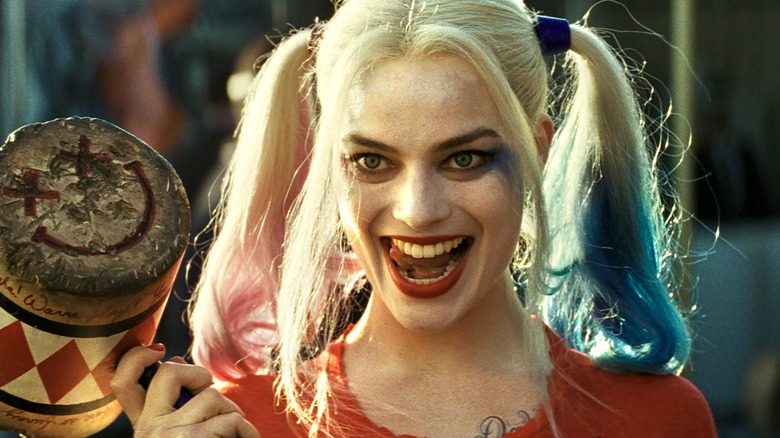
Harley Quinn is a badass villain – swinging her bat and mallet, striking down whoever dares to cross her. She truly is Gotham’s queen of crime. Here is what makes her so dangerous.
Harley is frequently portrayed as a victim of physical, psychological, and mental torture, which has eroded her sanity and turned her into a sociopathic madwoman. Harley is slavishly devoted to the Clown Prince of Crime. Although she occasionally hints that she is aware of the dangers of her obsession with the Joker, very few of her incarnations have ever been able to entirely free themselves from him.
Harley is bubbly, vivacious, and attractive. She can combine this with the flirty demeanour of a lady who is conscious of her stunning looks and will use it to get what she wants to disguise her deranged mind behind a juvenile facade. In the Mad Love narrative, she came closer to slaying Batman than the Joker ever did, and some versions even have a genius level I.Q., despite her madness. She is also far smarter than she lets on, leading both friends and foes to underestimate her. She has a talent for understanding people’s minds thanks to her background as a psychiatrist.
Delving deeper into her training as a psychiatrist, she is revealed to be highly skilled at psychiatry and gymnastics despite having a bit of memory loss. Harley finished her psychiatry residency at Arkham Asylum and is now a doctor with training in both criminology and psychoanalysis.
Due to her years spent as a criminal, Harley Quinn is a highly competent fighter who uses her gymnastic abilities to aid her in battle. Her gymnastic prowess is on par with Catwoman’s and Nightwing’s abilities. She is also resistant to a variety of different toxins and Poison Ivy’s own lethal touch as a result of her therapy. Since receiving injections from Poison Ivy, Harley’s strength and endurance have also been enhanced.
She doesn’t possess abilities that go far beyond those of a mortal man, yet she is physically stronger than any Olympian. She simply needs two punches or one kick to knock any man to the ground. Her tremendous gymnastic abilities combined with the impression that her legs are incredibly strong make her an extremely agile and “bouncy” threat in battle, which she amplifies with pendulous weaponry like her hammer.
Harley is also a master of deception and frequently uses intricate disguises in her activities. She has posed as a rock star’s entourage member, a secretary, a film executive, a police officer, an opera singer, a flight attendant, and a prison guard on numerous occasions, frequently robbing or tying up the people she disguised herself as. More significantly, Harley pretended to be Dr. Holly Chance, a romance columnist, for a considerable amount of time. Later, when she chose to return to therapy, Harley adopted the name Dr. Jessica Seaborn.
She is a talented manipulator but also prone to violent outbursts and has a vicious streak that is almost on par with the Joker. Although later iterations of Harley are frequently subservient and put up with his abuse out of a false sense of loyalty, the original Harley could really frighten him when she was upset.
As far as her weapons of choice go – knives, gag pistols, and grenades are just a few of the Joker’s party-gag weapons that Quinn makes use of. She has, however, also used her own weaponry, such as a pop pistol and a huge mallet. In order to distance herself from her past as the Joker’s henchwoman, Harley has switched from utilising her mallet to baseball bats during the New 52. She is badass and there is no doubting it!
Things to remember before watching season 3 of Harley Quinn
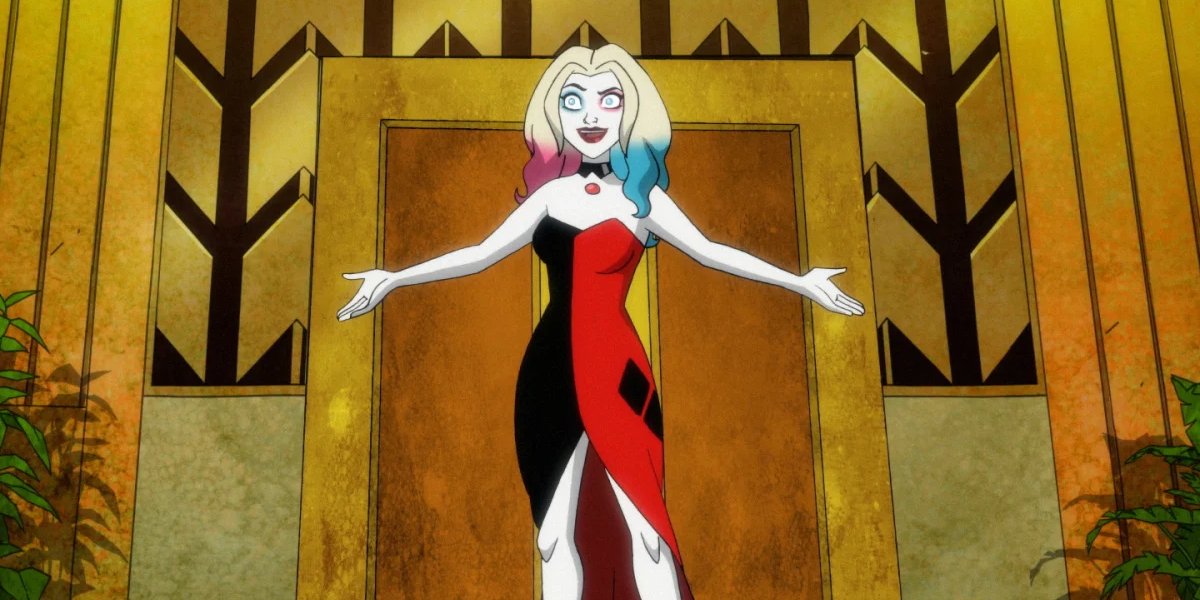
Based on the identically named D.C. Comics superhero developed by Paul Dini and Bruce Timm, Harley Quinn is an American adult animated dark humour television series. After breaking up with her boyfriend, the Joker, Harley Quinn and her best friend, Poison Ivy, embark on a series of mishaps that are written and executive produced by Justin Halpern, Patrick Schumacker, and Dean Lorey. On November 29, 2019, the programme made its D.C. Universe debut to rave reviews from critics who praised its animation, humour, grim tone, voice acting, and characterization of the central character.
Finally, with the release of season 3 of Harley Quinn, viewers will be able to witness the effects of the touching season 2 conclusion. The defunct streaming platform D.C. Universe, which was intended to include all of D.C.’s material before HBO Max came along, hosted the premiere of Harley Quinn a couple of years ago.
It’s reasonable to presume that viewers have probably forgotten about some of the key story lines in the series after the final episode of season 2 aired in June 2020. Here is a little catch-up for you though, given that many of them will probably play a crucial role in season 3!
The first episode contains the show’s defining moment. Batman arrives and transports Harley to Arkham when Harley and Joker are robbing some wealthy Gotham citizens. Harley is being told repeatedly that the Joker doesn’t love her by everyone, even the Riddler and Ivy, but she won’t listen. Following the setting of a trap for Harley and Batman, the Joker chooses Batman and lets Harley perish.
Fortunately, it was all a hoax, but Harley now realises the truth. One of the most well-known and least healthy relationships in the D.C. Universe is that between the Joker and Harley Quinn. Finally breaking free from Joker, Harley chooses to take on the role of a villain on her own. This has driven every decision the programme has made, and it’s likely to continue throughout season 3.
For an animated series built on recognisable Batman characters, the series’ death toll is surprisingly high, and one of the worst surprises occurred in the season 1 finale. Scarecrow made the decision to peek under Batman’s mask as he and the Joker were having fun. To his surprise, Joker killed him because he didn’t like the fact that he knew Batman was Bruce Wayne. Although the programme still has plenty of villains to exploit, Scarecrow’s passing serves as a warning that any of them could pass away at any time. Additionally, Joker is aware of who Batman is. He probably won’t care in the slightest, but that narrative element could come up at any time.
The Joker had seized control of Gotham City by the end of Harley Quinn’s first season. Fortunately, Harley was able to vanquish him, but the mayhem that followed set the tone for season 2’s events. The criminals of Gotham were able to take control of the city and divide up territory while Batman was incapacitated. The villains lost control of the city as a result of the events of season 2, but Gotham was still in worse shape than ever. With Gotham undoubtedly attempting to rebuild itself in season 3, Batman and Gordon will be quite busy dealing with the city’s major crime problem.
Harley became obsessed with becoming the greatest villain in Gotham since she was hurt that Ivy didn’t love her. She struck a bargain with Darkseid to take over Earth in order to do this. She sent the Parademons back after coming to Earth with an army of them and starting to demolish Gotham City, but she soon realised that it wasn’t what she really wanted.
Dr. Psycho would later turn on Harley and seize command of the Parademon army as a result of this incident. The Earth and Harley’s head were not, however, what Darkseid desired. He went back to Apokolips instead. Given that Darkseid is frequently regarded as the D.C. Universe’s most formidable foe, he might make a comeback to the show to exact his vengeance.
The show stunned its viewers by killing Poison Ivy before the end of season 1. A floral bed sprouted from her body as she died. It was a terrible incident, but thankfully by the end of episode 12, she had come back to life and had saved Harley. Ivy hasn’t thought much about death because it’s been indicated that she’s experienced it more than once, but as the two ladies start their new connection, it might be something to consider. We know that Ivy and Harley have feelings for each other but do you remember a major twist from the series? The Joker finding romance?!
Joker vanished after being overpowered by Harley and Ivy and having his tower fall on him. He had fallen in love with Bethany when he reappeared as a regular bartender. He had started to consider a few of her children to be his own. She forced him into a vat of acid and turned him back into the Joker, nevertheless, because Harley needed his assistance once more. Oddly enough, this didn’t change his emotions for Bethany, and the two continued to be together. The Joker is still a significant component of the programme and is expected to make multiple appearances in the forthcoming season. Joker still has the potential to cause problems for the residents of Gotham City despite having found love. There is so much to look forward to in the third season, including appearances from Bat Girl as well!
How do things look for the Third Season of Harley Quinn?
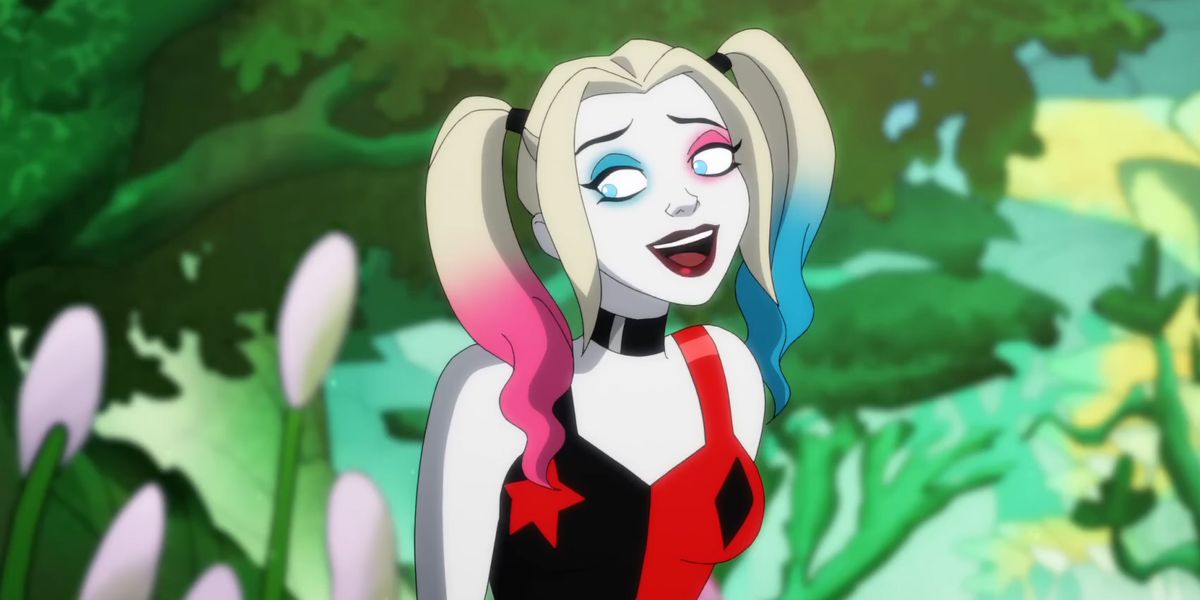
There have been a lot of speculations surrounding the much-awaited third season of Harley Quinn, but here is what we know. For two seasons, Harley Quinn shamelessly and hilariously ridiculed every self-serious aspect of the D.C. universe with recklessness while also slipping in some of the best character development possible in superhero streaming, echoing the gloriously anarchic energy of its title character. The same is true for Season 3, which maintains all of its biting satire but has a slightly softer heart as a result of Harley and Ivy’s finally-canonized romance. Although some of its different subplots dragged a touch, it was impossible not to appreciate it when it was on our new favourite Gotham pair.
How seriously Harley Quinn’s third season is taking the events of its second season finale, in which Harley and Poison Ivy publicly declared their love for one another, is refreshing. Poison Ivy granted herself permission to be upfront and honest about her emotions by leaving Kite Man at the altar for Harley. Harley gained a deeper understanding of Ivy’s drive for development and change as a result of her pursuit of her. Although Harley and Ivy’s honeymoon period is already starting to fade as the third season of Harley Quinn begins, the show never truly presents the mellowing of their relationship as a sign of peril for the two love birds.
They are genuinely in a good place; there is no turmoil in paradise and neither of the women has second thoughts about the other. Ivy, an acidic misanthrope, requires a little breathing room to consider her life goals in addition to Harley’s devotion because Harley, a crazy clown, maybe a little overwhelming. Ivy is the focus of a season-long arc regarding her reputation as one of D.C.’s most complex characters since Harley’s love for Ivy is so great and because the show’s writers aren’t interested in ending the couple’s relationship.
Poison Ivy has existed in the grey area between being your average Gotham eccentric and an unbeatable elemental force capable of dominating the world, just like Harley Quinn has done over the years in various media. The third season of Harley Quinn leans more toward the latter interpretation of Ivy to demonstrate the extent to which Harley’s love affects her. The show’s delicate handling of their romance seems to be an intentional recognition of early worries about queerbaiting. Harley Quinn holds Ivy and Harley’s love up as an example of a tumultuous, emotionally satisfying relationship, despite the fact that each of them is dysfunctional in their own way.
Apart from Poison Ivy and their relationship, as the city gears up for a mayoral election, Harley Quinn is able to delve into the personal lives of Gotham’s obvious heroes like Batman, Batgirl, and Nightwing thanks to the season’s relatively small supporting cast. The fact that the programme is still mostly from a malevolent perspective and is hostile to D.C.’s heroes continues to be one of the funny aspects of it, along with Harley Quinn’s filthier, more graphic quips intended to shock you. In any other D.C. timeline, the Bat-family might be happy to hear that G.C.P.D. Commissioner Jim Gordon is running for mayor. But because Jim, played by Harley Quinn, is a careless cop who abuses alcohol while on the job and alienates his family, his shift to politics provides a shockingly grim note that contrasts well with Batgirl’s rise to fame this season.
Even though Harley Quinn has frequently seemed fresh and new, this season also recognises how Harley has long since integrated herself into the canon created in the thirty years since her debut in Batman: The Animated Series. It makes sense that a figure that is so instantly adored by fans would change and develop drastically as several creative teams took control of them. Harley Quinn’s third season, however, embraces the breadth of the Harley brand and portrays it as her being a complex person, in contrast to so many other Harley-centric ventures that feel as though they live in opposition to one another.
Harley Quinn’s storytelling has been exceptional this season and we look forward to the coming episodes and whatever else the season has to offer – especially in terms of the Ivy – Harley romance and all the action this season has in store for us. I highly recommend this show to any and all D.C. fans. The third season of the HBO Max series is now available to stream with new episodes dropping every Thursday!
A Few Final words
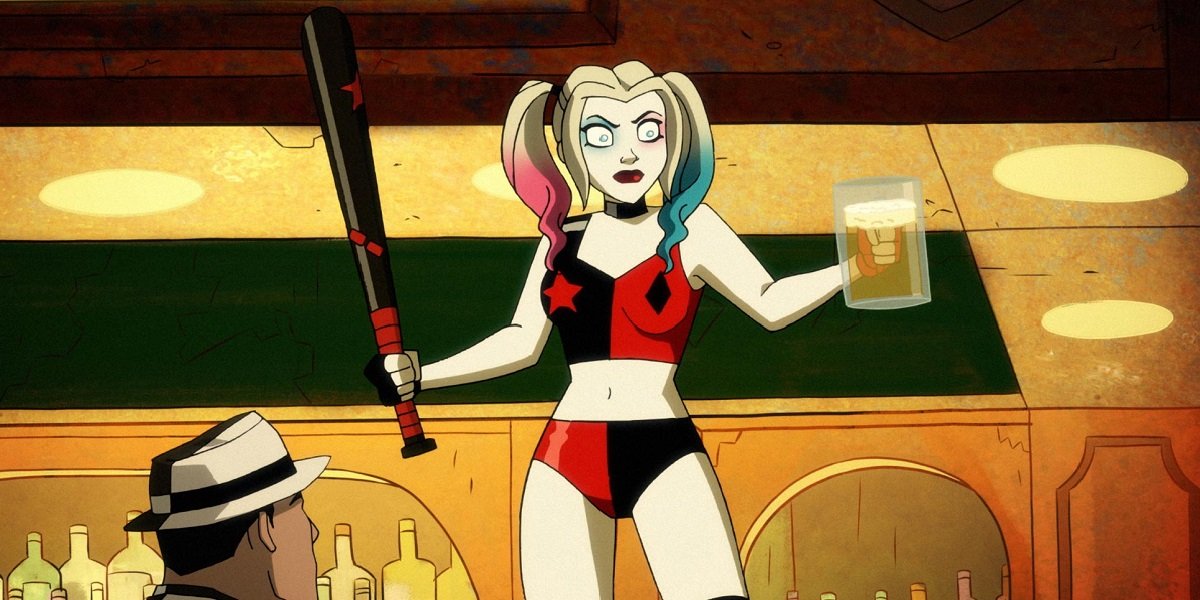
Harleen Quinzel will forever reign in the hearts of all D.C. fans – her personality coupled with her badass energy is what led to her rise to fame, and the Queen of Crime has only gotten better as the decades have progressed. She has had various story arcs, and functioned as a villain, antihero and superheroine, showing the diversity of her character. She is easily one of the most complex characters in the D.C. Universe and has had a massive impact on pop culture as well.
Every Halloween, there is at least one person who shows up with the iconic Harley Quinn hairstyle, wielding a wooden bat and that is just scratching the surface of the impact she has made. She is easily one of the most cosplayed D.C. characters and squares up to the fearsome Joker on more than one occasion, showing that she is not afraid of anything. With 30 years of passion, anger, crime, crimefighting and plain old badassery under her belt, we look forward to what more D.C. has to give to us because Harley Quinn is a character that keeps getting better and better.
